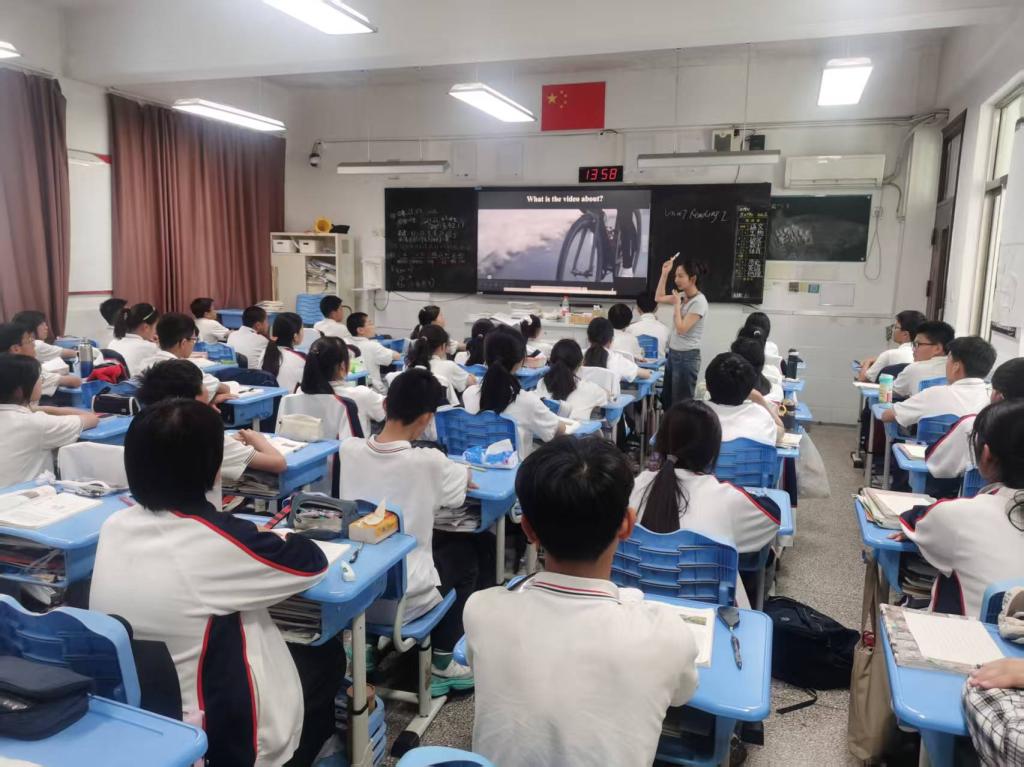Unit 7: A Cycling Trip (Reading 1)
I. Teaching Objectives
1. Knowledge Goals
Identify diary structure: date, weather, events, feelings.
Master key vocabulary: cycling trip, set off, repair, teamwork, nature.
Recognize time-order words (after breakfast, later, on the way back) for narrative flow.
2. Ability Goals
Skim/scan for details (events, feelings, problem-solving).
Retell the story chronologically and analyze text structure.
Discuss outdoor experiences using target language and write short diary excerpts.
3. Emotional Goals
II. Key Points
III. Difficult Points
IV. Teaching Methods
Task-based learning
Skimming & scanning
Pair/group discussions
V. Teaching Aids
VI. Teaching Procedures
1. Lead-in (5 mins)
Free Talk:
“Would you like a cycling trip? Why/why not?”
Discuss prep items (map, water, sun cream) via PPT visuals.
2. Pre-reading (5 mins)
3. Skimming (8 mins)
4. Detailed Reading (15 mins)
Time |
Events |
Feelings |
Key Details |
After breakfast |
Set off, got lost |
Worried |
Driver helped |
Later |
Arrive at village |
Excited |
Saw flowers, took photos |
On the way back |
Repair bike |
Proud |
Teamwork |
5. Language Focus (10 mins)
Vocab: set off, repair, teamwork, nature (practice with examples).
Diary Tips: Include date/weather, time words, and personal feelings.
6. Practice & Output (12 mins)
7. Summary & Homework (5 mins)
《A Cycling Trip》公开课教学反思
本次公开课以骑行日记阅读为载体,聚焦日记结构、时间表达及团队合作主题。结合课堂效果,反思如下:
一、亮点与成效
1.主题串联,目标融合
以骑行情境贯穿教学,通过梳理日记结构(日期 / 天气→事件→感受)和时间词(after/later/on the way back),自然衔接语言知识与情感目标,学生能运用目标结构描述经历,达成度较高。
2.任务梯度,激活输出
从细节提取到问题分析,任务难度递进。双人采访、小组分享等活动激活语言运用,学生在真实情境中输出目标句型,互动积极。板书简明呈现核心框架,强化知识建构。
3.情感渗透自然
通过迷路求助、修车合作等情节,引导学生感悟团队协作的重要性,结合讨论 “户外活动的意义”,实现语言学习与价值观培养的融合。
二、问题与不足
1.时间把控与深度拓展不足
词汇环节耗时超预期,压缩了小组分享时间;对 “团队合作” 的批判性讨论(如替代解决方案)不够充分。
2.差异化指导欠缺
课堂练习中对基础薄弱学生的个性化支持不足,部分学生在细节提取和语言输出上存在困难,分层任务落实不够细致。
3.技术互动待提升
缺乏实时互动工具,学生生成性资源(如写作片段)未能及时展示,反馈的直观性和多样性受限。
三、改进方向
1.优化节奏与问题设计
压缩词汇讲解时间,增加开放性问题(如 “若无人帮助,如何自救?”),深化主题思考。
2.加强分层支持
提前提供任务模板,小组活动中重点指导学困生,确保全员参与。
3.丰富技术融合
利用互动工具实时展示学生作品,提升反馈效率,增强课堂生成性。
四、结语
课堂以简洁框架实现语言与情感目标,但需在时间管理、分层教学及技术融合上持续改进,让阅读教学更高效、更具包容性。
